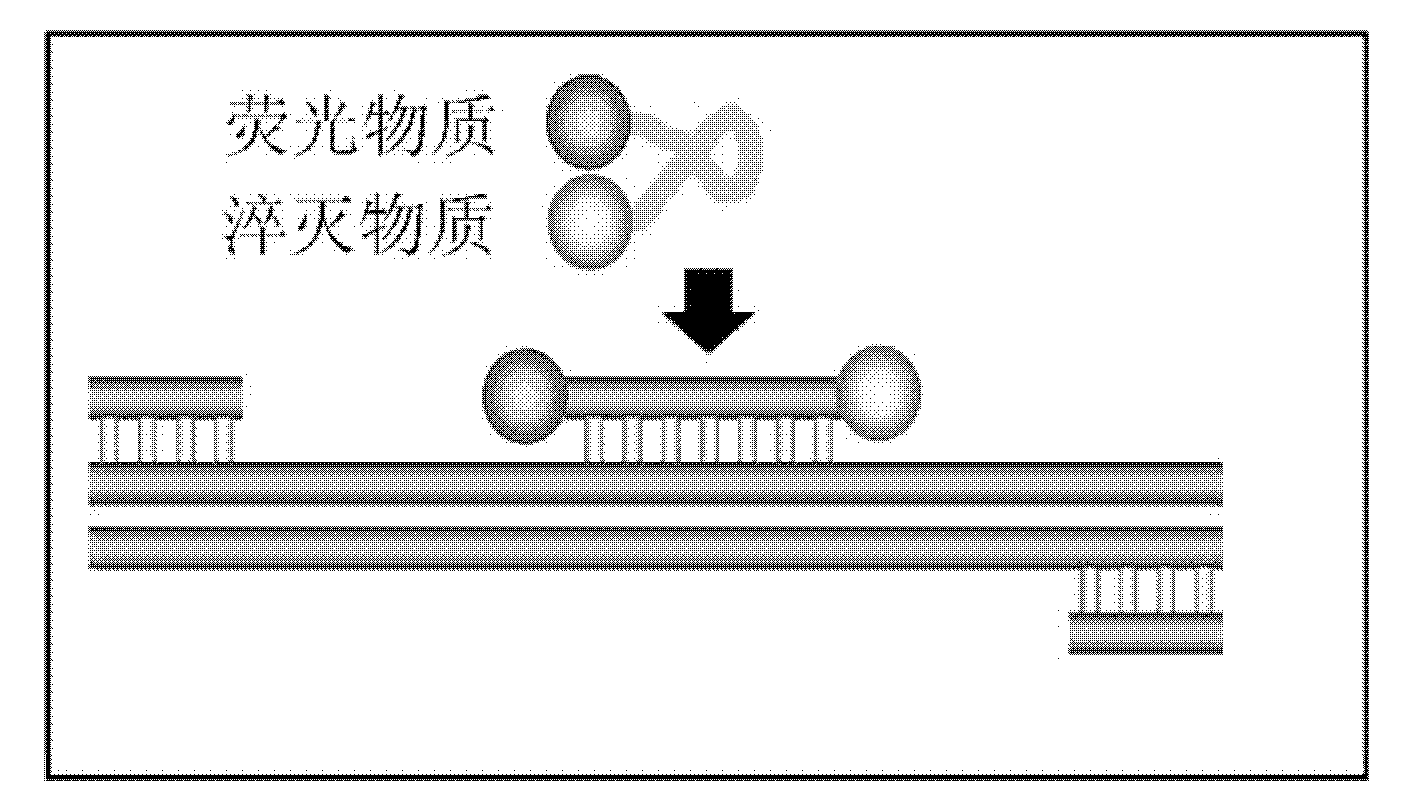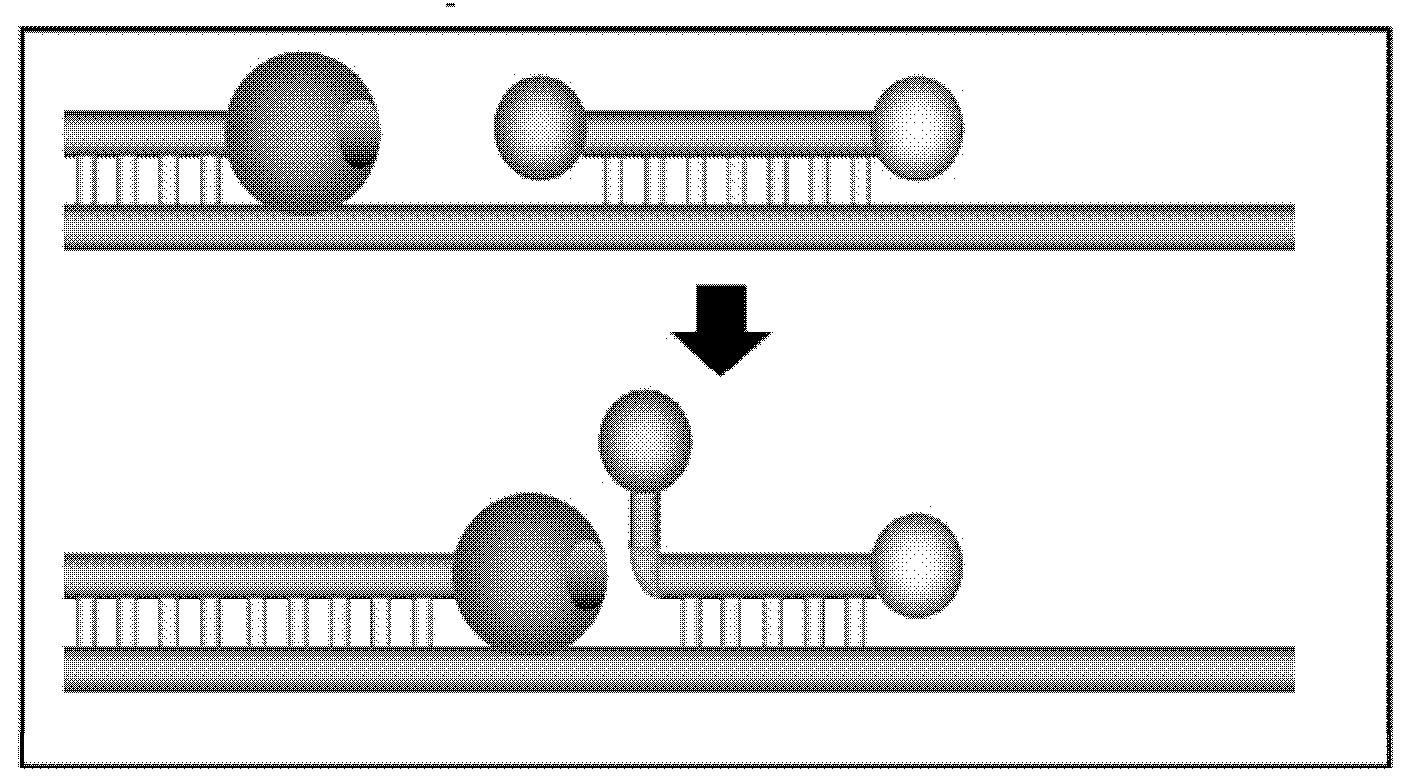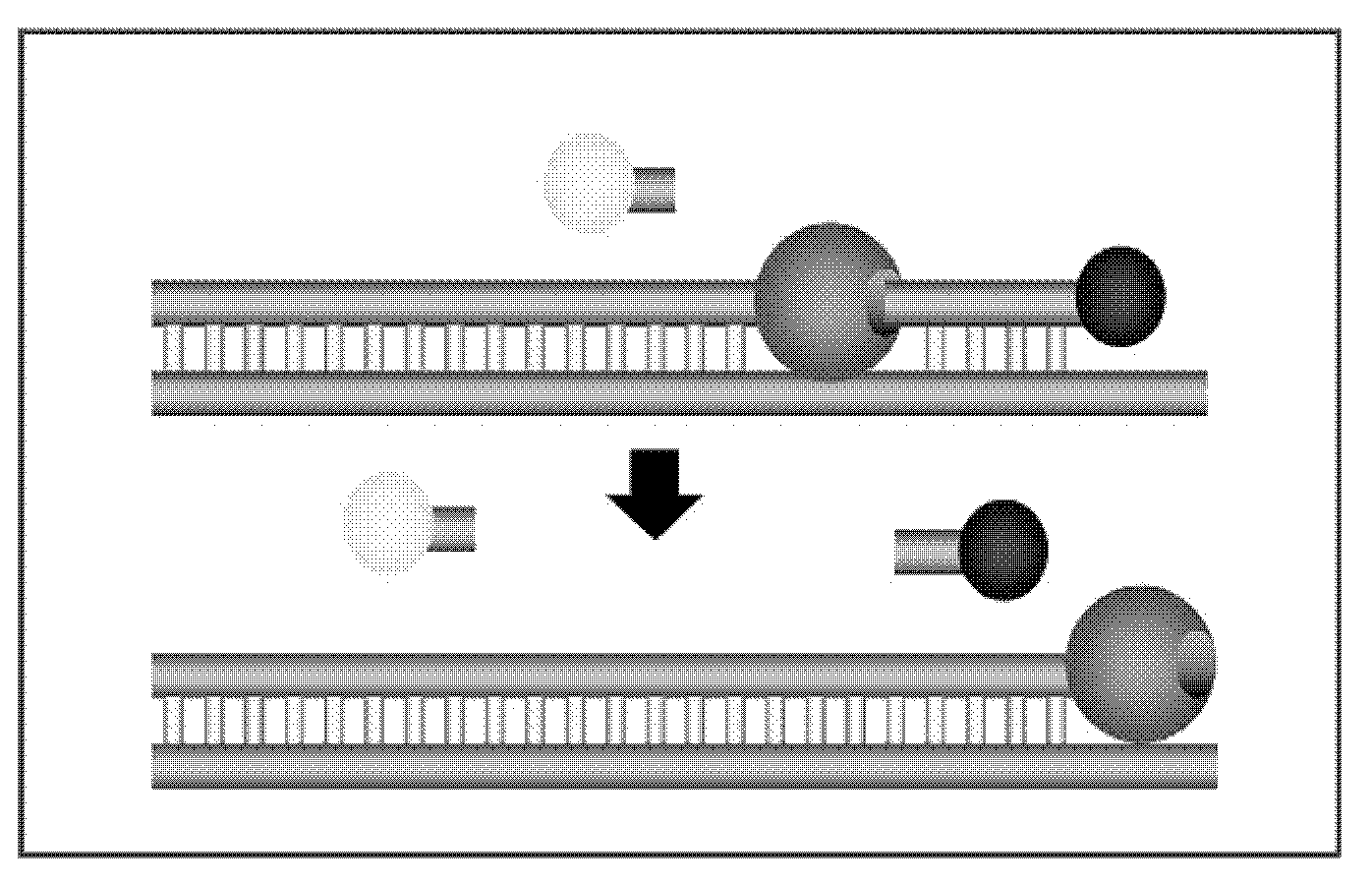Kit and method for detecting porcine circovirus type-2 (PCV-2) and subtypes thereof
A porcine circovirus and kit technology, which is applied in biochemical equipment and methods, material excitation analysis, and microbial determination/inspection, etc., can solve the problems of undetermined, laborious, and time-consuming mixed infection, and achieve easy and sensitive results. High performance, simple and quick effect
- Summary
- Abstract
- Description
- Claims
- Application Information
AI Technical Summary
Problems solved by technology
Method used
Image
Examples
Embodiment 1
[0060] Embodiment 1 kit composition
[0061] Fluorescent PCR reaction solution 2 tubes (25μL / reaction×100), the final concentration of dATP, dTTP, dGTP and dCTP is 0.24mM, Mg 2+ The final concentration is 2.4mM, the final concentration of primers C1 and C2 is 0.32μM, 1 tube of probe a and b mixture (2μL / reaction×100), the concentration is 5μM, and 1 tube of hot-start Taq enzyme and enzyme protection agent mixture (2μL / reaction×100), wherein the concentration of hot-start Taq enzyme is 1U / μL, the concentration of enzyme protection agent is 0.2U / μL, 1 tube of positive plasmid control a and b (250 μL / tube), and 1 tube of negative plasmid control (250 μL / Tube).
[0062] This kit uses a 30 μL reaction system, and the reaction solution is composed of: 25 μL of fluorescent PCR reaction solution, 2 μL of enzyme, 1 μL of probe mixture and 2 μL of template.
Embodiment 2
[0063] The usage method of embodiment 2 porcine circovirus type 2 double fluorescent PCR detection kit
[0064] 1. Sample processing:
[0065] Please extract the DNA by yourself. The positive control does not need to be extracted, and the sample is added directly.
[0066] 2. Detection of fluorescent PCR
[0067] (1) Take the PCR reaction solution, hot-start Taq enzyme and probe according to the number of samples to be tested n (n=number of samples to be tested + 2), mix them in a centrifuge tube, vibrate on a vortex shaker, and pack in each tube , cover the tube and set aside.
[0068] (2) Now add the negative control solution into an aliquot tube, take the DNA of each sample and add it to the corresponding reaction tube; finally take out the positive control solution and add it to another reaction tube, mark each reaction tube and centrifuge, take it out and put it in a fluorescent PCR instrument .
[0069] (3) Fluorescence PCR reaction conditions: pre-denaturation at 94...
Embodiment 3
[0079] Embodiment 3 kit specificity test
[0080] Take 2 μL of DNA from 4 control samples including porcine circovirus type 1 strain, porcine pseudorabies virus strain, porcine parvovirus, and PK-15 cells as templates for specific PCR amplification of the kit, and set a negative control group at the same time.
[0081] PCR amplification conditions: pre-denaturation at 95°C for 3 minutes, cycled 40 times according to the following parameters: denaturation at 95°C for 15 sec, fluorescence collection at 58°C for 40 sec.
[0082] The results of fluorescent PCR showed that only the DNA of PCV-2a and PCV-2b amplified curves, while the DNA of porcine circovirus type 1 strain, porcine pseudorabies strain, porcine parvovirus, and PK-15 cells as control samples were all amplified. No such amplification curve appears (see Figure 4 ).
PUM
 Login to View More
Login to View More Abstract
Description
Claims
Application Information
 Login to View More
Login to View More - R&D
- Intellectual Property
- Life Sciences
- Materials
- Tech Scout
- Unparalleled Data Quality
- Higher Quality Content
- 60% Fewer Hallucinations
Browse by: Latest US Patents, China's latest patents, Technical Efficacy Thesaurus, Application Domain, Technology Topic, Popular Technical Reports.
© 2025 PatSnap. All rights reserved.Legal|Privacy policy|Modern Slavery Act Transparency Statement|Sitemap|About US| Contact US: help@patsnap.com



